So, you’ve done it. You signed the contract and have started the web design process with a local agency it better be local! Or maybe you are just thinking about it. Maybe the anxiousness that accompanies a business decision like this has led you to this blog to learn more about what life with a new website will be like.
Relax, all these feelings of excitement and fear are natural during this process. We want to guide you through the ups and downs and help set some expectations for you.
Getting Started:
Depending on the level of website package you’re getting, the design process might have specific parameters that you have to operate within, such as number of hours, scope, or even specific templates that a web designer might customize for you. As you start on this process remember that great communication is your best policy. Chances are both you and your designer will have assumptions about your website. And you know what they say about assumptions… in the world of web design, assumptions lead to a bad time. Your web design agency doesn’t know all of your assumptions. So, don’t be bashful about laying out your expectations before things get started. This can save you both a lot of heartache in the future.
If your site will have a lot of data entry for products, services, etc., you might be charged extra for entering that data or you will need to make sure you are capable of entering it on your own. Sometimes this can require hours of extra work. It might not make sense to pay an agency rate to have this done for you. Don’t assume these things are included in the web design price. We build our system so that it is easy for our clients to add or edit their content as needed.
One question you need to ask is whether or not you will own your website once it’s paid for. There are many services out there like Squarespace, Dex Media, and Thryve, that own your website no matter how much you’ve paid for it to be designed. Building your website on a system like WordPress or simple HTML will help ensure you have access to move your website from one host to another (more about hosting later…).
Web Design:
If you are getting a custom-designed website it might be good to ask what software your agency is using. Some industry-standard software include Adobe Photoshop and XD. It is also good to ask if the custom design will be a customized theme. Some designers use predesigned themes as a starting point for websites. Whether your site is being built in WordPress, Shopify, or a simple HTML template, there are many predesigned themes that designers can use. This isn’t necessarily a bad practice and it can still require a lot of time and expertise to make these work, but it might limit what you can do with your website in the future and to what extent you can customize it.
Getting to a design that you love can be a short straight road, but there is a chance that it can turn into a long windy journey. We try to do everything in our power to get the best design possible for your brand. One term we hear a lot is ‘pop’. Clients sometimes want the logo or web design to ‘pop’.
I will let you in on an insider secret.
The word ‘pop’ is the bane of all designers. If you are cringing inside right now because you know you’ve used it in the past, don’t worry. We all have. I have even caught myself using it when providing creative direction in some of our projects.
It is because of those moments, and a little bit of inner reflection, that I have realized people use that word when what they are really expressing is, “I don’t really like this design yet, but I am not exactly sure why, and I don’t know how to articulate exactly what I’m looking for.” That’s not a bad place to be. It’s the growing pains of building your brand.
One of the best ways to help get to the best design is to have thought through what your site will look like and have examples of sites that have the same look and feel that you are going for. Identify elements in those designs that you really like and things that you don’t like: the curved dividers between sections are really nice, the slightly off-center boxes add character, the menu is too small or too large, the background is too busy, etc.
Manage Expectations
The initial design phase will look slightly different from agency to agency. But, it will generally involve submitting initial design mockups of the site with filler images and text. These will often come in the form of flat images that need to be viewed at 100% to get the full effect of what it will look like as a website. The text that is used is often passages of “Lorem Ipsum” text. This will look like Latin, but it is intended to give you an idea of what the design will look like once the final copy is in place. The same goes for images. If high-quality photos from you aren’t available during the design process, stock photos will be used instead. Sometimes these are replaced once appropriate high-quality photos are received, but sometimes they might make it into the final design when applicable.
Since most of your visitors will visit the homepage more than any other page on your site, we will design the homepage and base the style and elements of the subpage on the homepage design. This is why it is extremely important to make sure colors, fonts, and elements that will be used throughout the site (like the header and footer) are revised and decided upon during the homepage design process. Once the homepage has been designed, we typically build out the needed subpage templates depending on the requirements for your site, and the homepage design is handed off to our developer to begin implementation. The subpages will go through a similar, but often shorter, approval process before being moved to development.
Web Development
Once the designs are approved, there is a lot of work that goes on in the background. The length of time development takes depends largely on the type of site. Sometimes this can take a week, but larger e-commerce sites might take a few months. Depending on the needs of your site, there might be times when you are asked to review a certain aspect of the functionality. Think of it like building a house. You might stop by your unfinished house to pick out windows or trim while other parts are being built. So don’t get worried if the electricity isn’t on yet. Once the site is ready for a final review, there might still be some aspects that need to be adjusted or fixed. Keep in mind that changes at this point might incur additional charges, especially if they are outside of the original scope of the project.
Content for your new site
At some point during the development stage, we will refine the content of the site. Sometimes the content determines the layout of the page. So, the quicker you submit content for pages the better. If you have several services you offer then having a few paragraphs about each ready to go makes this process a lot smoother. Here is a list of pages that many businesses need content for:
- An about page: 2 or more paragraphs about your business. How and when you started, who your staff is, etc. Having photos of your staff on this page is also a plus.
- Services pages: Usually a 1-2 sentence summary of the service as well as a 1-2 paragraph description will do well for service pages.
- Products: Whether you have an e-commerce site or are just featuring your products on the site, you will want to make sure you have descriptions and details for each.
E-Commerce?
Operating an online store is a big project. Make sure you have thoroughly thought through how this will integrate into your business as a whole. If you are selling anything through your site, then you will want to make sure you think through the logistics of your online store. Things like shipping rates, taxes, and payment processors might affect the complexity of your site. Keep in mind that there are many different ways to do these things, and they are ultimately your responsibility as the site owner to communicate your needs to your agency. These are also things that will have to be in place before your site is live.
If your business plan relies primarily on e-commerce sales then these things are especially important. We have been able to design and develop websites for several successful online businesses, but, unfortunately, we have also seen some beautiful sites close shop. 99% of the time that e-commerce sites fail has nothing to do with the way they look or function. It comes down to their broader advertising and marketing plans, the overall business model, or whether or not their market buys into their product or service.
Hosting and Support:
Your website ultimately will have to live on a server so that people all around the world can access it. The term that refers to how and where your site lives is ‘hosting’. Hosting comes in all shapes and sizes. If you google ‘web hosting’ you will be presented with an overwhelming number of options. Some of the more popular web hosts out there offer shared hosting. This is where your site lives on a server with other sites. With hosting services like GoDaddy, the number of sites yours shares a server with can be close to a thousand. This means that your site can be more susceptible to hacking. Also, it may load slower because you are sharing server resources with many other sites.
You can also opt to host it on a VPS (virtual private server) or dedicated server.
These are more secure and faster but can be expensive. We have partnered with a Google Cloud Platform provider to ensure both security, speed, and reliability at an affordable price. Technically, on our service, you are on a shared server. But, each account is locked like Fort Knox by limiting how many resources it can use at any given time. Your account is monitored and backed up daily. It also comes with a free CDN (content delivery network – check this link out for a good explanation). As well as SSL (a secure sockets layer – this gives your site the green lock symbol in the url address bar) to make sure it is fast and secure.
You will want to make sure you understand ongoing hosting and support costs. Changes to your site after it is launched might cost extra. This is something you will want to work out with your agency beforehand. Typically we make minor changes to sites for free and are available for free tech support.
Launching the Site:
Before you know it, your bundle of web joy will be ready to be launched into the big world. It’s an exciting day. Will calls come pouring in, will your competition crumble beneath your feet? Probably not. It’s good to have some realistic expectations for what will happen with your site at this point. You won’t see a lot of traffic right out of the gate unless you put money behind good advertising campaigns. Organic traffic takes some time to acquire.
If you aren’t a local business, then you might never get organic traffic without working on producing good content. If you are a local business, then you should expect to be found on Google’s local results within the first week or two. However, appearing in the top 3 (or even on the first page) depends largely on how hard your competition is working on their SEO (search engine optimization – this is the ongoing work to ensure your site is climbing the ranks of Google). If you are going up against competition that has a lot of reviews and an older web presence, it might take a while before your site beats theirs and you will most likely need to invest in either your own SEO or Google Ads to get traffic and calls from your website.
I hope this has been a helpful guide. If you have any questions feel free to call Epic Nine at 865-240-0297.




